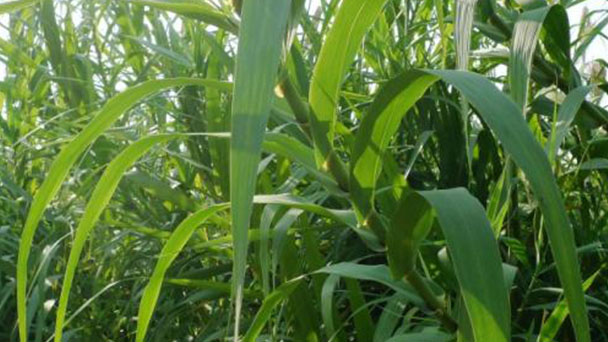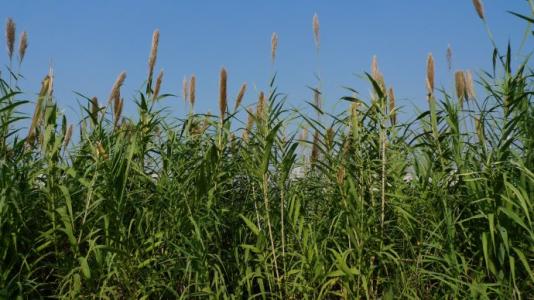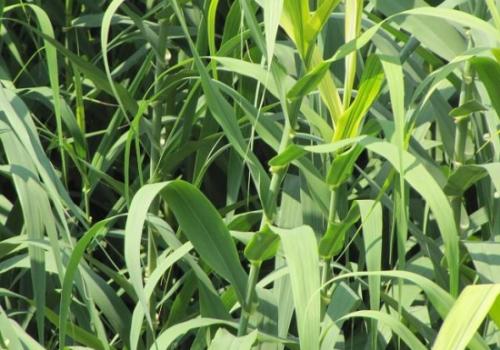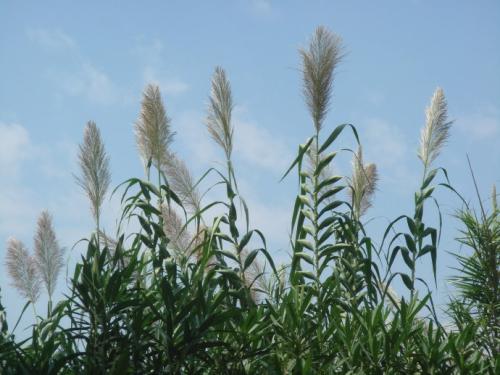Arundo profile
Written by Maggie
Dec 21 2020

Arundo is a genus of stout, perennial plants in the grass family. Arundo is native to southern Europe, North Africa, and much of temperate Asia as far east as Japan. They grow to 3–6 m tall, occasionally to 10 m, with leaves 30–60 cm long and 3–6 cm broad. Species Arundo collina Ten.
Arundo picture

Arundo Morphological characteristics
Arundo perennially, with developed rhizomes. Culms are thick and erect, 3 -- 6 m tall, (1-) 1.5 -- 2.5 cm in diam., tough, with many nodes, often branching. Leaf sheaths are longer than internodes glabrous or pilose at neck; The tongue is truncated, ca. 1.5 mm, apex with short cilia; The leaf blade is flattened, 30-50 cm long and 3-5 cm wide, upper with margin slightly coarsely, base white, clasping. Panicles are extremely large, 30-60 (-90) cm long, 3-6 cm wide, densely branched, obliquely ascending; The spikelet is 10-12 mm long, with 2-4 florets, cob nodes ca. 1 mm long; The palea midvein is extending to 1 -- 2 mm short awn, abaxial middle subdensely pilose, 5 -- 7 mm long, base plate ca. 0.5 mm long, upper side pubescent, first lemma ca. 1 cm; The palea is about half as long as the outer scale; Arundo has 3 stamens, caryopses fine black. Flowering & Fruiting period is from September to December. It is a 5 -, 6 - and 9-fold aneuploid.
Arundo growth habits
Arundo prefers warm, wet and cold. Arundo is found in sandy loam along riparian paths.
Arundo geographic distribution
Arundo is located in Guangdong, Hainan, Guangxi, Guizhou, Yunnan, Sichuan, Hunan, Jiangxi, Fujian, Taiwan, Zhejiang, Jiangsu.Gardens were introduced and cultivated all over the south. The tropical regions of Asia, Africa and Oceania are widely distributed. Type specimens are taken from Spain.

Arundo key values
Use value
Arundo stems are reeds in wind instruments. It is the raw material of high quality pulp and rayon with high fiber length, ratio of length to width and high cellulose content. Young branches and leaves of crude protein up to 12%, is a good livestock green feed.
Rhizome (Asparagus spears) bitter, cold. Clear heat and benefit water. It is used for fever, bone exhaustion, urination, urination and toothache.
Chemistry
Arundo has antihypertensive and antispasmodic effects. It can antagonize the spasm caused by histamine, 5-hydroxytryptamine and acetylcholine. Tenidine toad, presented in the rhizomes, has an anti-acetylcholine effect, is stronger against acetylcholine in the skeletal muscles than in the smooth muscles, stimulates the uterus, and releases histamine. Arundo is non - toxic to sheep, and the rhizome can be used for edema.
Arundo technology applications
In April 2014, a study by the Agricultural, Environmental and Landscape Land Laboratory at the Advanced School of Santa Ana in Pisa, Italy, found that Arundo's production of biogas was a promising solution that could be used to produce engine biofuels with minimal environmental impact.

Latest Updated
- Benefits of Bugleweed - 7 Science-backed Health Benefits
- Bugleweed Dangers & Side Effects - Is It Poisonous?
- How to Plant Evergreen Trees - What You Should Know
- When to Plant Evergreens - Grow Guide for Evergreen Trees
- 12 Wonderful Evergreen Shrubs for Your Garden
- 12 Popular Evergreen Plants with Pictures for Beginners
- When And How To Prune A Lilac Bush Like a Pro
- How to Grow & Care for Lilac Vine (Hardenbergia Violacea)
- Japanese Lilac Tree (Syringa Reticulata) Care & Propagation Guide
- Shumard Oak Pros and Cons - What to Know
Popular Articles
- Winter maintenance of Antirrhinum Majus
- How to Grow Terminalia Mantaly Tree
- How to Grow and Care for Crossostephium Chinense
- How to grow Antirrhinum Majus in spring
- Peristeria Elata (Dove Orchid) Profile: Info & Care Guide
- Underwatered Snake Plant (Sansevieria Trifasciata) - Signs And How To Fix
- How to Care for Brazilian Jasmine Plant (Mandevilla Sanderi)
- How to Grow & Care for Graptopetalum Purple Delight in Summer
- Rosa Chinensis (China Rose): Plant Growing & Care Tips
- How to Care for Baby Sun Rose (Aptenia Cordifolia)